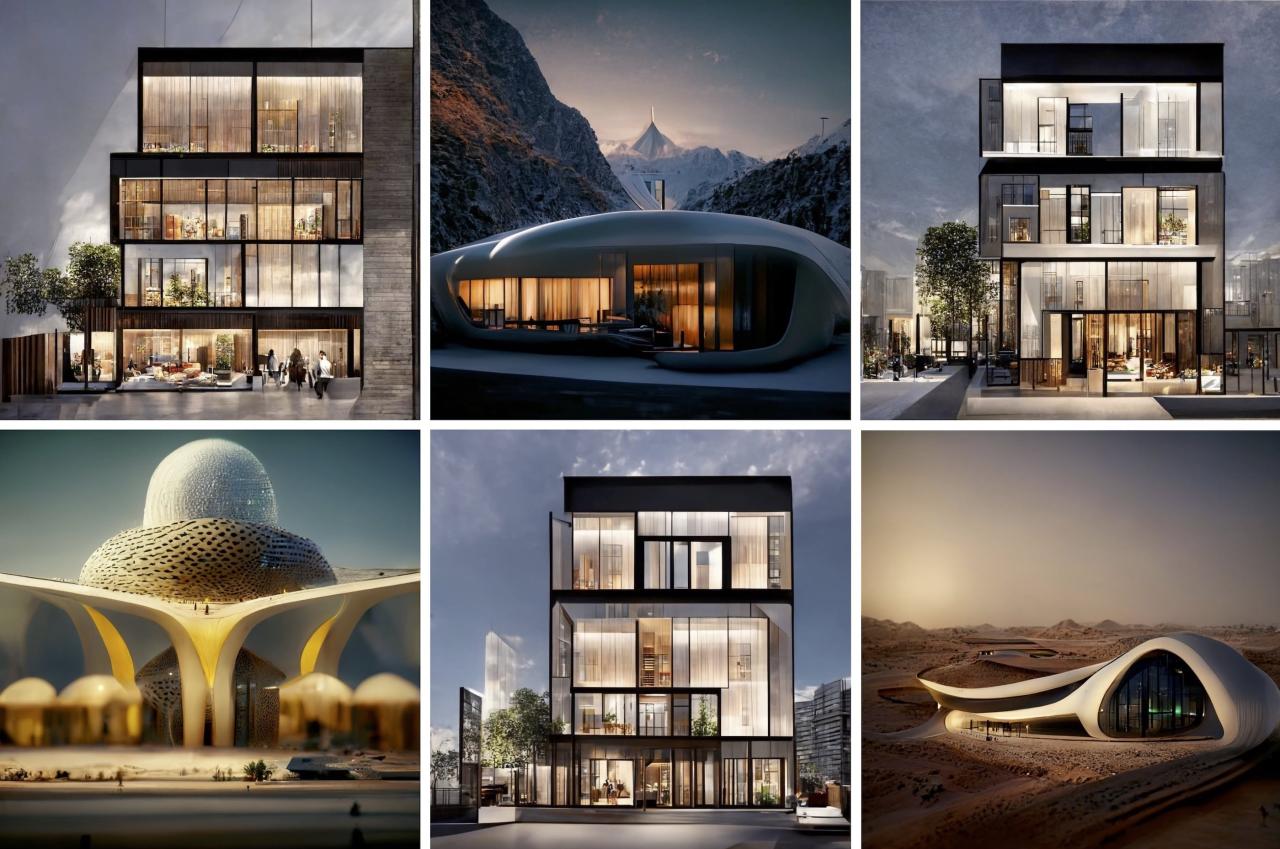Exploring the landscape of sustainable architecture in 2025 reveals a promising future where innovation and eco-conscious design converge. From cutting-edge materials to revolutionary technologies, the trends shaping the industry are poised to redefine the way we build and interact with our environment.
Let's embark on a journey through the key developments that are set to transform the architectural realm in the coming years.
Sustainable Materials

In the realm of architecture, sustainable materials play a crucial role in reducing the environmental impact of construction projects. Architects and designers are constantly exploring new and innovative materials that are eco-friendly and resource-efficient.Traditional building materials such as concrete, steel, and glass have significant environmental footprints due to their high energy consumption and carbon emissions during production.
In contrast, sustainable alternatives like reclaimed wood, bamboo, straw bales, and recycled plastic offer lower embodied energy and carbon emissions, making them more environmentally friendly choices.Architects are increasingly integrating recycled materials into their designs to minimize waste and promote a circular economy.
By repurposing materials like reclaimed wood from old buildings, recycled metal, or glass, architects can not only reduce the demand for new resources but also add unique aesthetic value to their projects.One of the emerging trends in sustainable architecture is the use of bio-based materials derived from renewable sources such as plant fibers, cork, or hemp.
These materials are not only biodegradable and non-toxic but also have excellent thermal and acoustic properties, making them ideal for insulation and construction purposes.
Benefits of Using Bio-based Materials
Bio-based materials offer a wide range of benefits in construction, including:
- Reduced carbon footprint: Bio-based materials have lower embodied energy and carbon emissions compared to traditional materials, helping to mitigate climate change.
- Improved indoor air quality: Bio-based materials are non-toxic and emit fewer volatile organic compounds (VOCs), creating healthier indoor environments for occupants.
- Enhanced thermal performance: Materials like straw bales and hempcrete provide excellent insulation, reducing energy consumption for heating and cooling.
- Promotion of biodiversity: Using bio-based materials supports sustainable agriculture and forestry practices, preserving ecosystems and biodiversity.
Green Building Technologies
In the realm of sustainable architecture, advancements in green building technologies have been crucial in promoting energy efficiency and reducing environmental impact. These technologies encompass a range of innovative solutions that are reshaping the way buildings are designed, constructed, and operated.
Energy-Efficient Systems
Energy-efficient systems play a pivotal role in sustainable architecture by minimizing energy consumption and reducing carbon emissions. Smart lighting systems, for example, utilize sensors and automation to adjust lighting levels based on natural light availability and occupancy, significantly cutting down on energy usage.
IoT Integration
The integration of IoT in building design has revolutionized sustainability efforts by enabling real-time monitoring and control of energy usage. Smart thermostats, connected to IoT platforms, can adjust temperature settings based on occupancy patterns, optimizing heating and cooling operations for maximum energy savings.
Renewable Energy Sources
Solar panels and wind turbines are integral components of sustainable architecture, providing clean and renewable sources of energy. Solar panels harness sunlight to generate electricity, while wind turbines convert wind energy into power, reducing reliance on fossil fuels and lowering greenhouse gas emissions.
Building Automation Systems
Building automation systems, powered by advanced sensors and controls, enable centralized management of various building functions. From HVAC systems to lighting and security, these systems optimize energy usage, enhance occupant comfort, and streamline maintenance operations for a more sustainable built environment.
Biophilic Design
Biophilic design is a concept that integrates nature and natural elements into the built environment to create spaces that benefit both people and the planet. It focuses on connecting occupants with nature to improve well-being, productivity, and overall quality of life.
Incorporating Nature into Building Structures
Biophilic design can be seen in various forms within building structures, such as green roofs, living walls, atriums, and large windows that allow natural light to flood indoor spaces. For example, vertical gardens on the exterior of buildings not only enhance aesthetics but also provide insulation, absorb carbon dioxide, and promote biodiversity.
Psychological Benefits for Occupants
Studies have shown that biophilic elements in architecture have a positive impact on mental health and well-being. Access to natural light, views of greenery, and indoor plants can reduce stress, increase focus, and promote a sense of calm and relaxation among building occupants.
This design approach can also enhance creativity and overall happiness.
Improving Indoor Air Quality
Incorporating biophilic elements such as plants and green walls into building interiors can help improve indoor air quality by filtering out toxins and pollutants. Plants act as natural air purifiers, absorbing harmful chemicals and releasing oxygen, creating a healthier and more refreshing indoor environment.
This not only benefits the occupants' physical health but also contributes to a more sustainable and eco-friendly building design.
Urban Planning

Urban planning plays a crucial role in shaping sustainable cities of the future. By implementing strategic designs and infrastructure, cities can become more efficient, livable, and environmentally friendly.
Creating Pedestrian-Friendly and Green Spaces
One key strategy in sustainable urban planning is prioritizing pedestrian-friendly environments and incorporating green spaces throughout the city. This includes designing walkable streets, bike lanes, and parks to encourage alternative modes of transportation and improve air quality.
Mixed-Use Developments in Sustainable City Planning
Integrating mixed-use developments in urban areas is another effective approach to sustainable city planning. By combining residential, commercial, and recreational spaces within close proximity, cities can reduce the need for long commutes, promote social interaction, and optimize land use.
Reducing Carbon Footprint in Urban Architectural Designs
Reducing the carbon footprint of urban architectural designs is essential for creating sustainable cities. This can be achieved through the use of energy-efficient materials, renewable energy sources, green roofs, and smart building technologies to minimize energy consumption and greenhouse gas emissions.
Conclusion
As we conclude our exploration of sustainable architecture trends in 2025, it becomes evident that the future of construction lies in sustainability and environmental stewardship. With a focus on eco-friendly materials, energy-efficient technologies, biophilic design, and urban planning strategies, architects are paving the way for a greener and more sustainable built environment.
Embracing these trends will not only enhance the quality of our structures but also contribute to a healthier planet for generations to come.
Detailed FAQs
What are some examples of sustainable materials used in architecture?
Sustainable materials commonly used in architecture include bamboo, recycled steel, reclaimed wood, and rammed earth.
How does IoT contribute to sustainability in building design?
IoT enables buildings to be more energy-efficient by optimizing systems such as lighting, HVAC, and security based on real-time data.
What is the significance of biophilic design in sustainable architecture?
Biophilic design connects people with nature, enhancing well-being, productivity, and overall health within built environments.

























